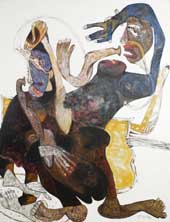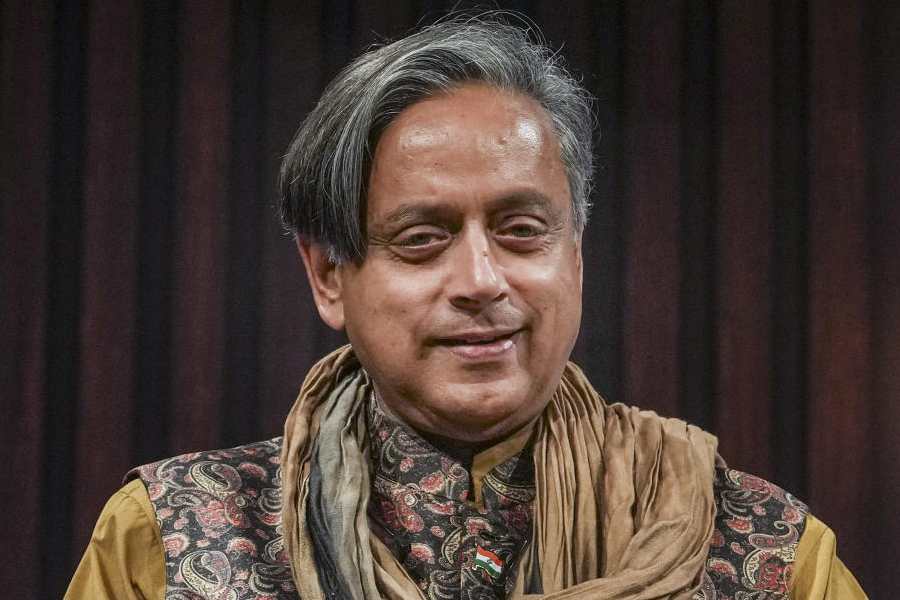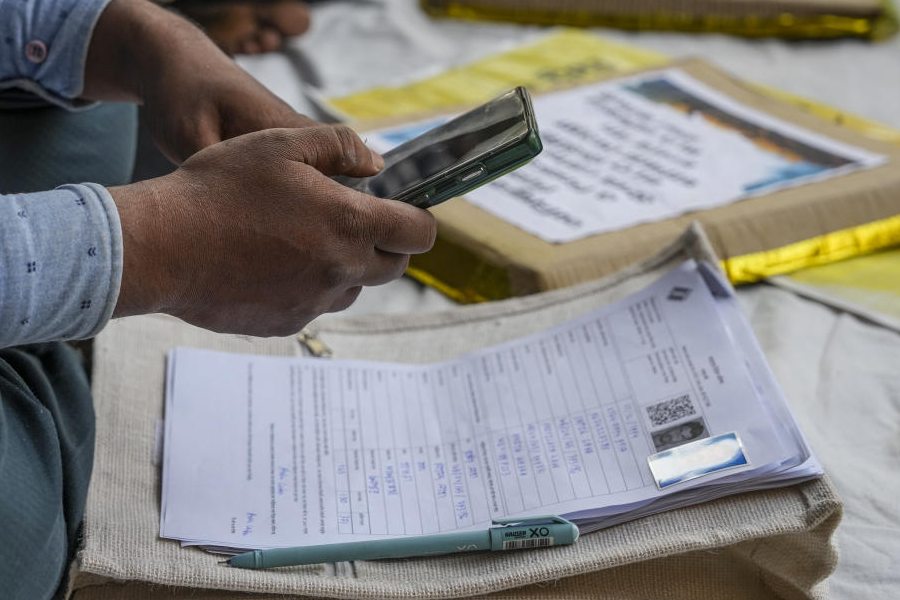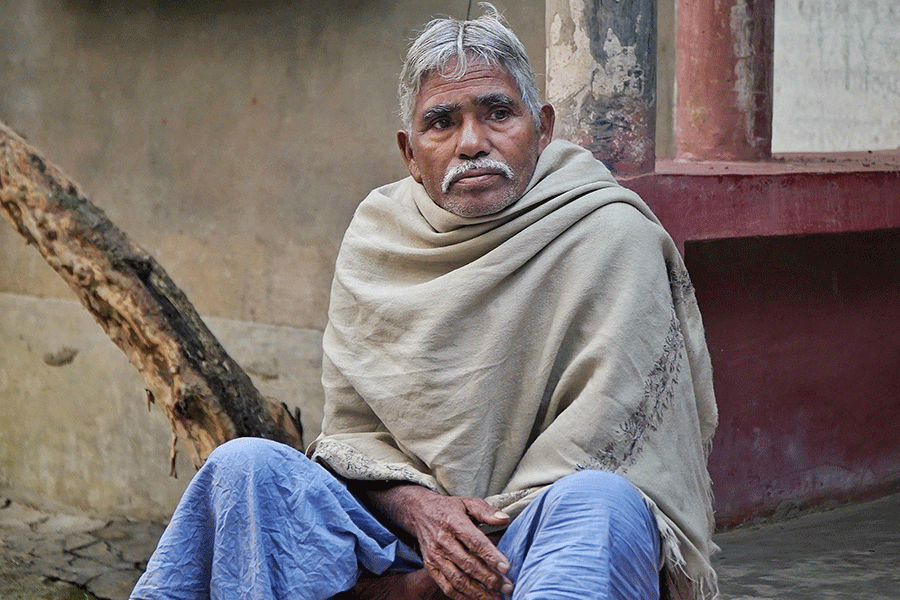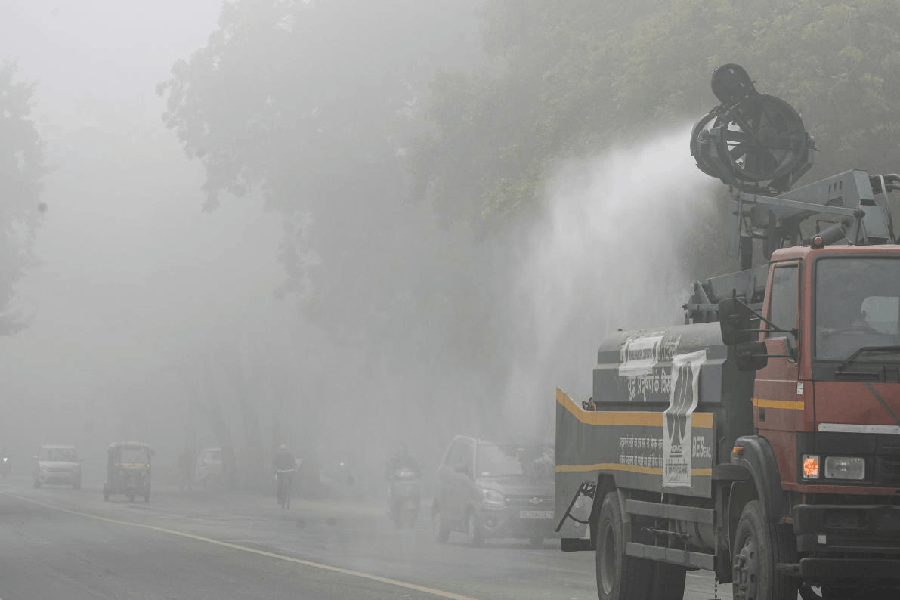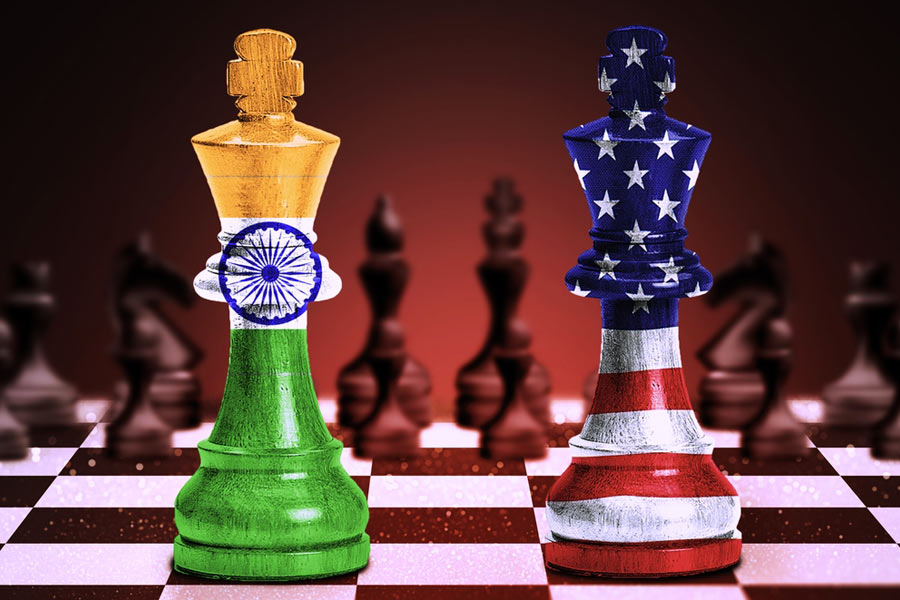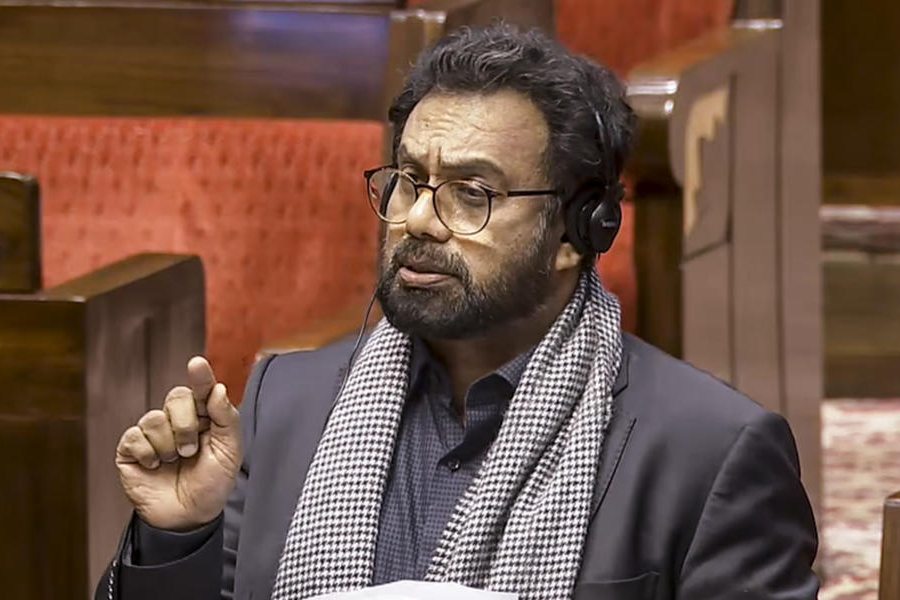|
|
This is, what you may call, art fare. A rather catholic spread in terms of styles, catering to different tastes. Urbane tastes, it may be added. Urbane because, firstly, there are about 10 artists out of a total of 29 who are taken up with abstraction, mainly calibrating tones, textures and shapes for subtle structural shifts. Secondly, even the figurative works demand an initiated eye. Indeed, palliatives that ensure general
acceptance — like photo-realist depiction, for example, exacting/prettified portraiture, or lyrical landscapes — have no place in CIMA’s summer show that is on till July 17.
In the context of the first, the name that comes to mind is Siraj Saxena. His three vertical canvases experiment with beguiling configurations in applying the paint — in this case oil and acrylic — to insinuate topographic and tonal variations. It could be layered, scraped off in patches to expose the texture of the canvas, or left in dense little ridges or stipples.
As remarkable are the Madhuri Kathe works. Finely differentiated colour tones combine with threadbare weaves pasted on the canvas to tease out a repertoire of suggestions. The fabric, “sculpted” imaginatively with ruptures and tears and stresses on the wefts and woofs, becomes a metaphor for decay — appearing to simulate both a garment and a torso in No. 40 — and of flux, hinting at primordial geological formations in No. 39.
Mohan Singhane is similarly understated as he arranges with spartan rigour — in the manner of templates or photoshop colour styles —small rectangles with dry pastel lines or shades in browns, with slight changes in the direction of the lines or the depth or quality of the colour. The mixed media collage of Yogesh Rawal has a touch of sedate classicism in its rhythm of textured greys bound by dark bands. Seema Ghurayya is more low-key in her palette: grades of beige laid out as rectangular frames that encase delicate variations.
Yusuf’s huge canvas explodes in tectonic turmoil, while Vishaka Apte’s bronze tones are handled well. Santanu Maity, though, goes for captivating colours like red and yellow which are, however, somewhat lozengy in their radiance. Prabhakar Kolte’s idiom remains edgily virile in its evocation of the urban underbelly as a sweaty, throbbing chaos. And, finally, there is Mona Rai’s Nakshatra II, with its congealed daubs and drips of paint, dollops of blackened cloth sticking out like overgrown moles at the bottom, and a scheme of metallic greys. Yet the glinting tinsel and painted bindis — it is named Nakshatra, remember, perhaps in irony — and such feminine embellishments don’t add anything to a work of masculine brio.
To come to the figurative works. First of all, there is the youthful elder, Jatin Das. His engagement with form leads to succinct eloquence. The stratagem of stirring colour blocks to spry life with the barest scaffolding of a flowing line or two indicates a sure touch. Another element to note is the poise of substance and space as sculpturesque forms dissolve into umbrae. Young Sumitro Basak, at the other end, follows the same mantra: less is more. You sense, in the laconic abbreviation of form, an urgent energy that delights in deleting details but sends brusque, cut-out figures leaping and striding across flat colour zones.
The sole work by Uday Mondal whets your interest. There is a raw-nerve intensity in his figure of a woman on a seat. Smudgy, faceless and ill-defined as most images are to those hurrying by. Interestingly, the title is a question: Is She Relaxing? It may appear meaningless at first. But pause a moment and the tension of a limbo, of a wait, or maybe a wake, comes through. Another young artist to watch is Kingshuk Sarkar, groping through the tradition of modernism to hone his own tone. Although both the works on view give a sense of déjà vu, No. 45 — despite its Warholian ploy and perhaps a loan of the idea of a scream from Munch — could show him the way to go.
Shakila’s intricate montage of everyday images, fleeting and fragmentary, has a racy colloquialism. Shreyoshi Chatterjee retrieves cloth and threadwork from the parlour and re-invents a very womanly chore and craft as art. Possibly there is a feminist assertion in her choice of the marginal material. If No. 38 is amusing in its folkish image, No. 18 explores permutations with cloth shapes, tangled thread, doodling and blank space.
Two other women must be mentioned. Arpita Singh and Jaya Ganguly, with her unsettling images of torn and tortured flesh (picture: Similitude Reconciled). Arpita Singh’s women in Two Women, Two Men, ungainly and unclothed, remain as excruciatingly vulnerable as ever. Ganesh Pyne, Jogen Chowdhury, Manu Parekh and Lalu Prosad Shaw are among the other artists represented.

